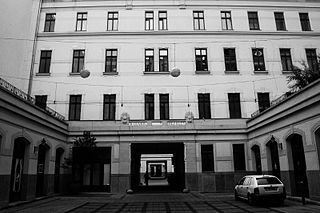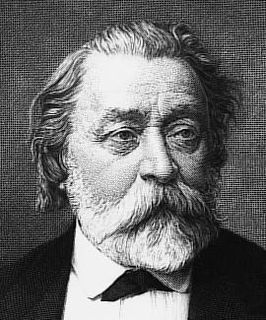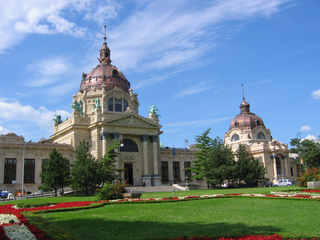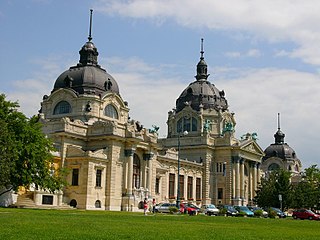
Oskar Kaufmann was a Hungarian-Jewish architect. He was an expert in construction and design and was active in Berlin beginning in 1900.

Albert Schickedanz was an Austro-Hungarian architect and painter in the Eclectic style.

Ferenc Joachim was a Hungarian painter of portraits and landscapes in oil, watercolors and pastels on canvas, board and paper. He studied and painted in Budapest and Western Europe. As an untitled member of the minor nobility, Joachim was entitled to bear the honorary prefix Csejtei, so prior to the Communist abolition of honorifics in 1947 his name might be found in the form "Csejtei Joachim Ferenc" in Hungarian, or in German "Franz Joachim von Csejthey".

Steindl Imre was a Hungarian architect.

Gyula Pártos was a Hungarian architect. Together with Ödön Lechner he designed a number of buildings in the typical Secession style of the turn of the century Hungary.

Alajos Hauszmann was a Hungarian architect, professor, and member of the Hungarian Academy of Sciences.

Zsigmond Kisfaludi Strobl was a Hungarian sculptor and artist. His sculptural style integrated elements of realism and academism style mainly engaged in creating portrait busts.
Emil Ágoston, was a notable Hungarian architect.
Dénes Györgyi was a Hungarian architect, a member of the Györgyi-Giergl artistic family.

Adolf Láng, was a Hungarian-German architect, one of the main representatives of the historicist style during the late 1900s.

Aladár Árkay was a Hungarian architect, craftsman, and painter.

István Medgyaszay was a Hungarian architect and writer. He was one of the first to employ Hungarian folk idioms, particularly from Transylvania, and combine them with influences ranging from the far east to organic architecture.

József Angster was a Hungarian organ making master and founder of the Angster dynasty, one of Central Europe's most sought after in the craft, an important figure in Hungarian applied arts history.
Győző is a masculine Hungarian given name. It is the Hungarian translation of Viktor: győző (“conqueror”), győz + -ő. It was created during the Hungarian language reform that took place in the 18th–19th centuries. It may refer to:

Frigyes Schulek was a Hungarian architect, a professor at József Technical University and a member of the Hungarian Academy of Sciences (Magyar Tudományos Akadémia).

Győző Zemplén was a Hungarian physicist who worked in the field hydrodynamics and kinetic theory of gases.

Gozsdu-udvar comprises seven buildings and their courtyards in the 7th district of Budapest, and can be approached from Király Street, Dob Street and Holló Street. The building complex was built in 1901 by the Gozsdu Foundation according to the testament of the Romanian lawyer, Emanoil Gojdu.
Győző Leblanc is a well-known Hungarian tenor opera singer, actor and director.




















